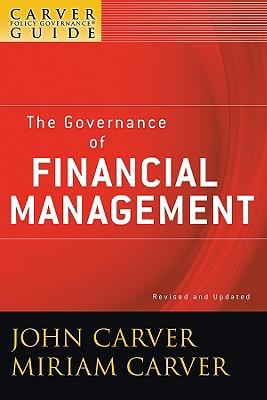Debra Diacono, CFO of James Ltd a listed Australian company, has approached you for advice on how to estimate the company's weighted average cost of capital. She supplies you with the following information to assist you with your calculations: 13-week Treasury note yield 3.00\% p.a. , 10-year government bond rate 3.50% p.a. , Number of James Ltd shares on issue 10 million Current share price $45.60 Bond details: - One thousand 6\% fixed-rate bonds with a face value of $100,000 each initially issued with 10 years to expiry 4 years ago. Coupons are paid annually with one full year until the next coupon is paid - 10-year bonds with the same credit rating are currently being issued with coupon rates =5.5% p.a. - 6-year bonds with the same credit rating are currently being issued with coupon rates =4.5% p.a. Corporate tax rate 30%, Market risk premium 7% p.a., Standard deviation of returns on the ASX 20025% p.a., Standard deviation of returns on James Ltd shares 30\% p.a., Covariance between the returns on the ASX 200 and James Ltd shares 0.045 (a) Calculate the cost of equity capital for James Ltd. (b) Calculate the (after tax) cost of debt capital for James Ltd. (c) Calculate the after-tax weighted average cost of capital for James Ltd. [hint: when calculating the market value of the bonds, make sure you follow the market convention and use the relevant market yield for those bonds quoted on a before-tax basis] (d) You present your results to Debra who says "That's fantastic that you've finally calculated this figure for us as we really need it to assess a new investment opportunity. Without giving too much away, it's pricesensitive you know, we're considering the acquisition of a large listed company in the US and we really need to know our cost of funds so that we can work out if this is positive NPV or not.". In no more than 8 lines provide a response to Debra about the suitability of using WACC in shares 0.045 (a) Calculate the cost of equity capital for James Ltd. (b) Calculate the (after tax) cost of debt capital for James Ltd. (c) Calculate the after-tax weighted average cost of capital for James Ltd. [hint: when calculating the market value of the bonds, make sure you follow the market convention and use the relevant market yield for those bonds quoted on a before-tax basis] (d) You present your results to Debra who says "That's fantastic that you've finally calculated this figure for us as we really need it to assess a new investment opportunity. Without giving too much away, it's pricesensitive you know, we're considering the acquisition of a large listed company in the US and we really need to know our cost of funds so that we can work out if this is positive NPV or not.". In no more than 8 lines provide a response to Debra about the suitability of using WACC in the setting she proposes. Debra Diacono, CFO of James Ltd a listed Australian company, has approached you for advice on how to estimate the company's weighted average cost of capital. She supplies you with the following information to assist you with your calculations: 13-week Treasury note yield 3.00\% p.a. , 10-year government bond rate 3.50% p.a. , Number of James Ltd shares on issue 10 million Current share price $45.60 Bond details: - One thousand 6\% fixed-rate bonds with a face value of $100,000 each initially issued with 10 years to expiry 4 years ago. Coupons are paid annually with one full year until the next coupon is paid - 10-year bonds with the same credit rating are currently being issued with coupon rates =5.5% p.a. - 6-year bonds with the same credit rating are currently being issued with coupon rates =4.5% p.a. Corporate tax rate 30%, Market risk premium 7% p.a., Standard deviation of returns on the ASX 20025% p.a., Standard deviation of returns on James Ltd shares 30\% p.a., Covariance between the returns on the ASX 200 and James Ltd shares 0.045 (a) Calculate the cost of equity capital for James Ltd. (b) Calculate the (after tax) cost of debt capital for James Ltd. (c) Calculate the after-tax weighted average cost of capital for James Ltd. [hint: when calculating the market value of the bonds, make sure you follow the market convention and use the relevant market yield for those bonds quoted on a before-tax basis] (d) You present your results to Debra who says "That's fantastic that you've finally calculated this figure for us as we really need it to assess a new investment opportunity. Without giving too much away, it's pricesensitive you know, we're considering the acquisition of a large listed company in the US and we really need to know our cost of funds so that we can work out if this is positive NPV or not.". In no more than 8 lines provide a response to Debra about the suitability of using WACC in shares 0.045 (a) Calculate the cost of equity capital for James Ltd. (b) Calculate the (after tax) cost of debt capital for James Ltd. (c) Calculate the after-tax weighted average cost of capital for James Ltd. [hint: when calculating the market value of the bonds, make sure you follow the market convention and use the relevant market yield for those bonds quoted on a before-tax basis] (d) You present your results to Debra who says "That's fantastic that you've finally calculated this figure for us as we really need it to assess a new investment opportunity. Without giving too much away, it's pricesensitive you know, we're considering the acquisition of a large listed company in the US and we really need to know our cost of funds so that we can work out if this is positive NPV or not.". In no more than 8 lines provide a response to Debra about the suitability of using WACC in the setting she proposes









